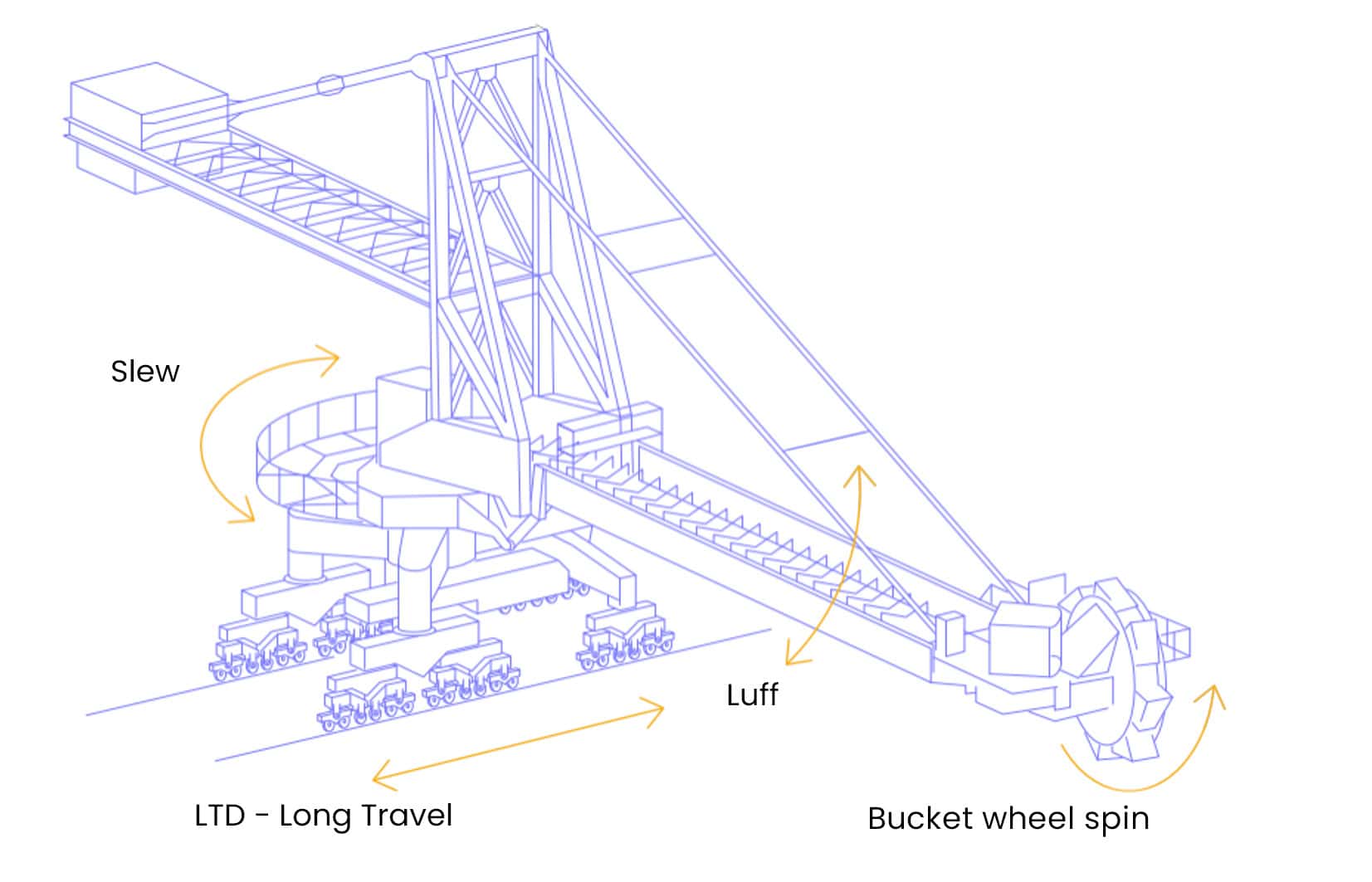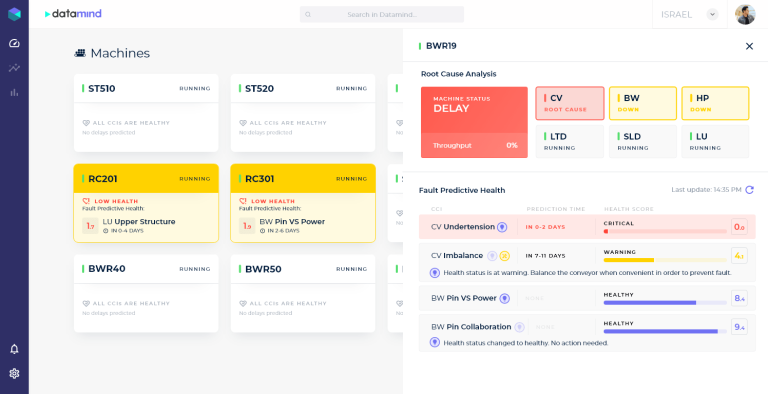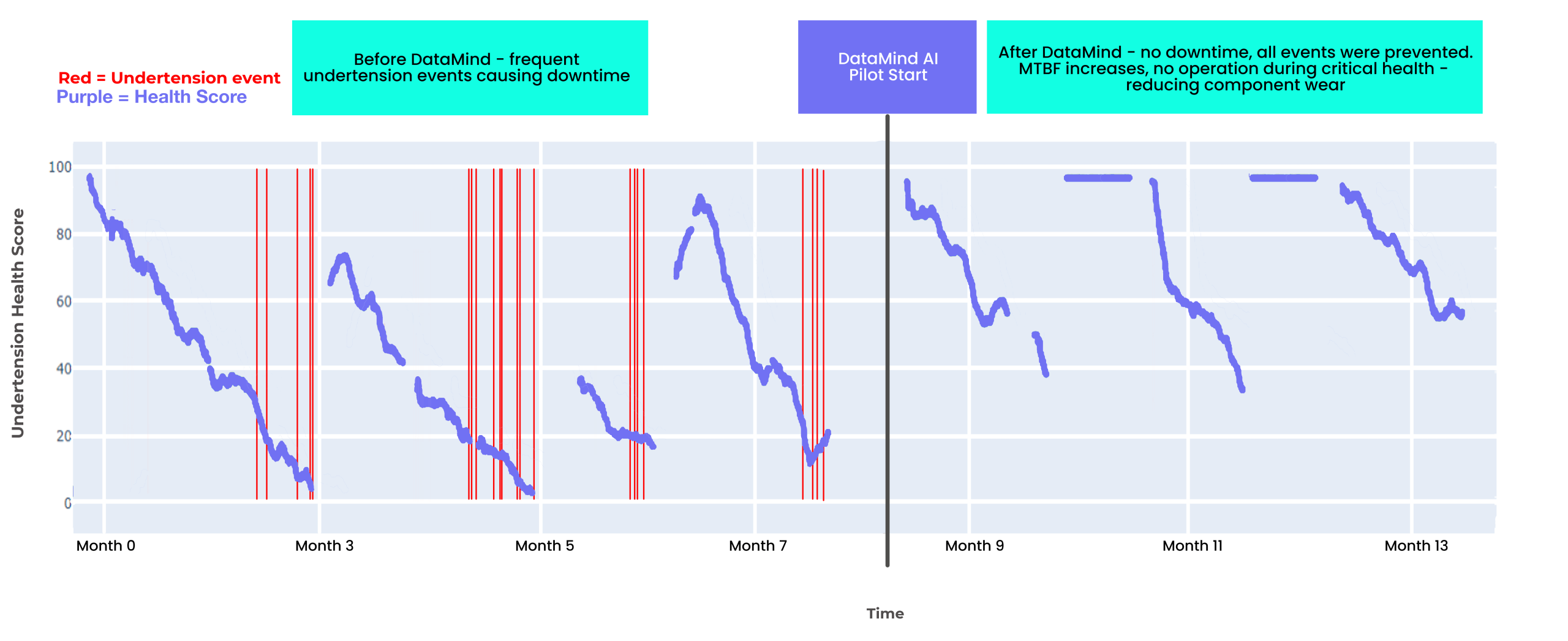Leading iron ore mining company reduces reclaimer fleet’s unscheduled downtime by 25% and increases productivity by 1.2M tons annually
March 27, 2022
Reclaimers are critical for the iron ore processing flow
Iron ore is one of the most demanded commodities in the world, being used 20 times more than all other metals combined. It takes about 1.6 tons of iron ore to produce 1 ton of steel. The iron ore mining process includes huge machines such as reclaimers, car dumpers, trains over 2.5 kilometers long, and ships with capacity of about 47 olympic pools.
The bucketwheel reclaimer is a critical machine in the material handling process. It has the ability to recover immense amounts of iron ore from a stockpile, and concretely, 15,000 tons per hour for the machines of one of the world’s leading iron ore companies. The company has over 20 bucketwheel reclaimers, both on company’s sites and port, which experience hundreds of hours of downtime each year and therefore constitute a key bottleneck of the mining process.

The challenge
The bucketwheel reclaimer experienced hundreds of hours of downtime a year, resulting in reduced output and delays for the entire supply chain.
The bucketwheel reclaimer is a very complex machine that necessitates complex AI technology for predictive maintenance. It consists of dozens of sub-components, such as motors, gearboxes, pumps, VVVFs, hydraulics and more. These components are interdependent and depend on environmental variables such as the type of ore being reclaimed, weather, and modes of operation. Therefore, it is impossible to construct simple heuristic rules around sensor values to indicate an upcoming failure. There are thousands of combinations of patterns that indicate a future failure, and the goal of AI models is to find them automatically and calculate the estimated time to failure.

The Solution
Each machine in the fleet collects about 7,000 historian tags which include both sensory data such as temperatures, pressures, torques and tensions and component power values, thousands of different calculated variables of the PLC, including all types of events such as alarms and warnings, as well as process information, such as whether iron ore fines or lumps are being reclaimed, which affects the load on the machine.
The AI models of DataMind AI were fine tuned on the organization’s last two years of historical data, and learned to predict a variety of failures in various components –
- Failures in the machine’s conveyor system, including undertension, overtension, imbalance and run-offs.
- Encoder mis-calibration failures in the luff and slew drive systems which, amongst others, caused hundreds of micro-delays every year because of limit trips.
- Lubrication system failures, including lubrication pump deterioration and lubricant leaks.
- Bucketwheel system failures caused by the oil cooler, the gearbox, or mis-calibration of the torque pin.
In addition to predicting these failures, the maintenance & reliability teams is provided with:
- Real time indication of switch faults such as of temperature, pressure and flow switches, which can cause dozens of hours of downtime per year, while their replacement is very cheap in comparison to the lost throughput.
- Real time indication of the quality of the maintenance performed, such as the retensioning quality of the conveyor belts or the calibration quality of the encoders, to ensure that the component is back to full health and that the time until maintenance is required again is maximal.
- Real time health score calculation, to avoid premature maintenance which causes throughput losses due to excessive scheduled downtime.
- Reduction of the machine trip investigation time, by analyzing the sensory information and the sequence of alarms causing a trip, to provide an immediate indication of the root cause alarm, which caused the trip. This allows to aim the maintenance teams directly to the component that needs to be handled, to return the machine to operation as quickly as possible.

Return on investment
The solution proved its value very quickly. On average, the unscheduled downtime of machines enhanced with DataMind AI was reduced by 25%, causing an increase of 1.2 tons of iron ore per annum.
Another benefit was that the maintenance & reliability teams began relying on AI not only to prevent trips and downtimes, but also to perform maintenance for mechanical components which were deteriorating towards critical health. As a result, long shutdowns that had previously been caused by catastrophic failures as a result of prolonged operation in critical mechanical conditions, were no longer occurring. In fact, there has been a gradual cultural change where the maintenance strategy has become data-driven, leveraging health scores and time-to-failure estimations of the artificial intelligence.
The company initiated the project as a POC on 3 bucketwheel reclaimers, and then expanded its production to additional bucketwheel reclaimers in the fleet, in order to unlock the full potential operational and business value. In addition, the company expanded it to an additional type of essential assets – the car dumper fleet, which is also a critical machine in the iron ore process flow.